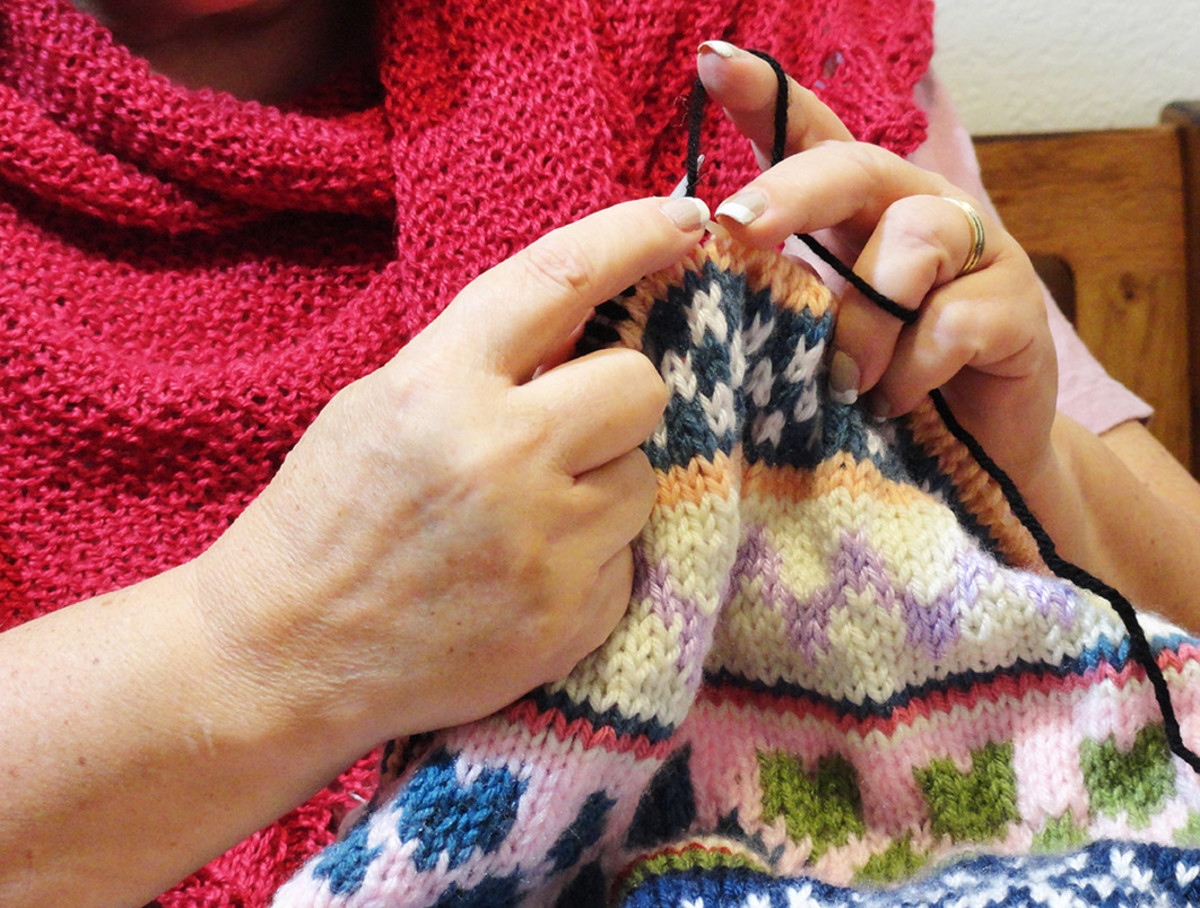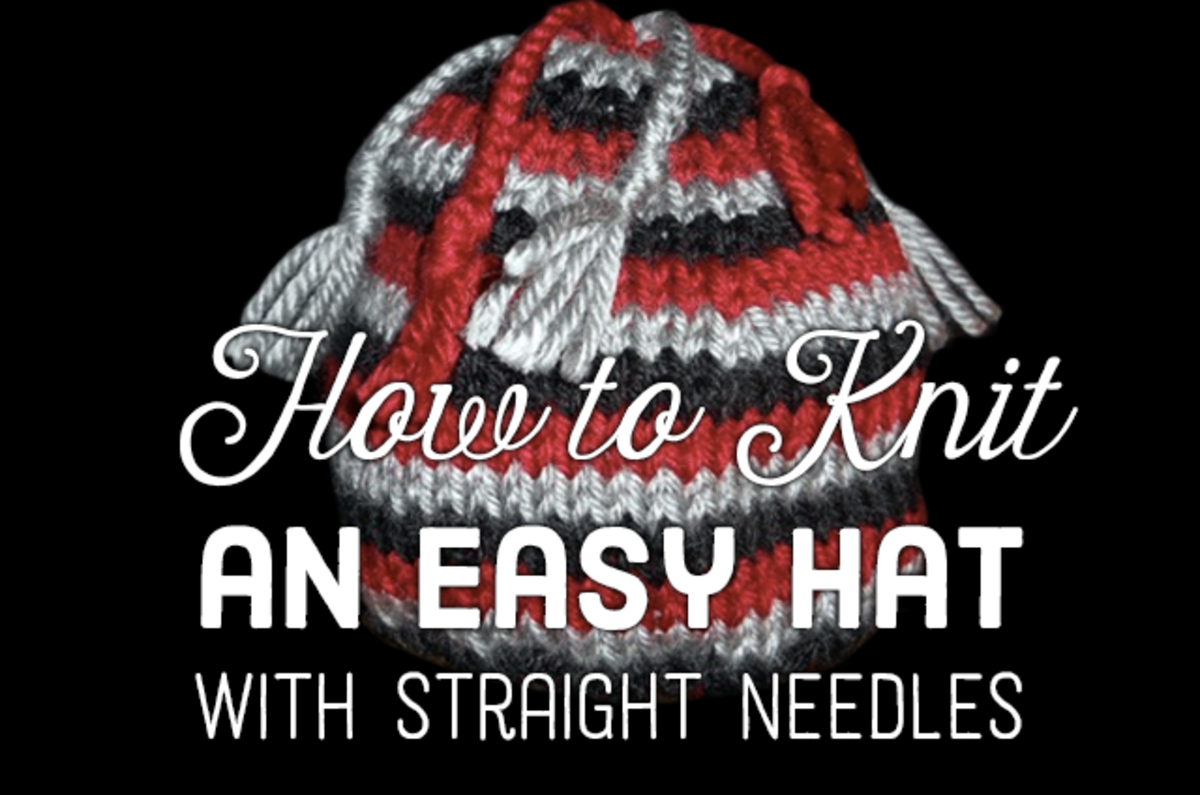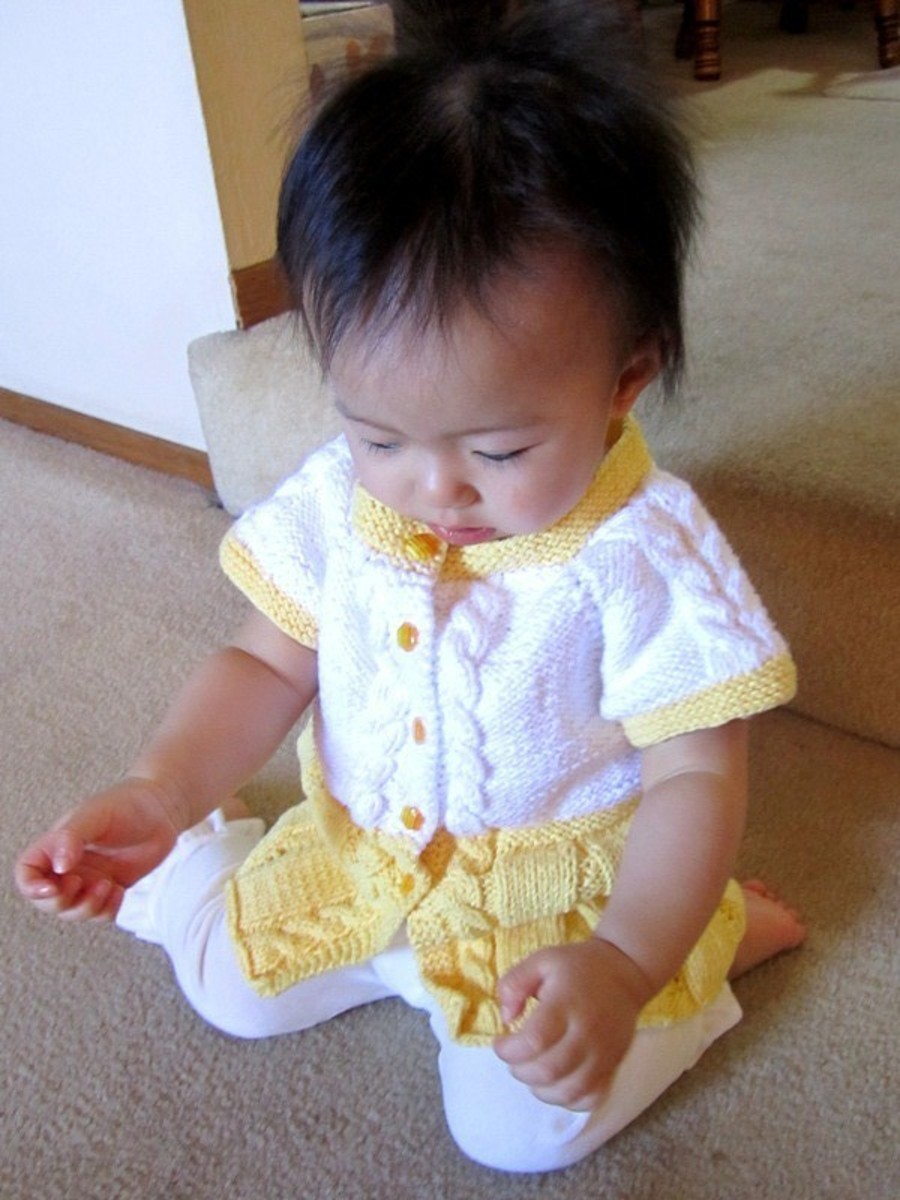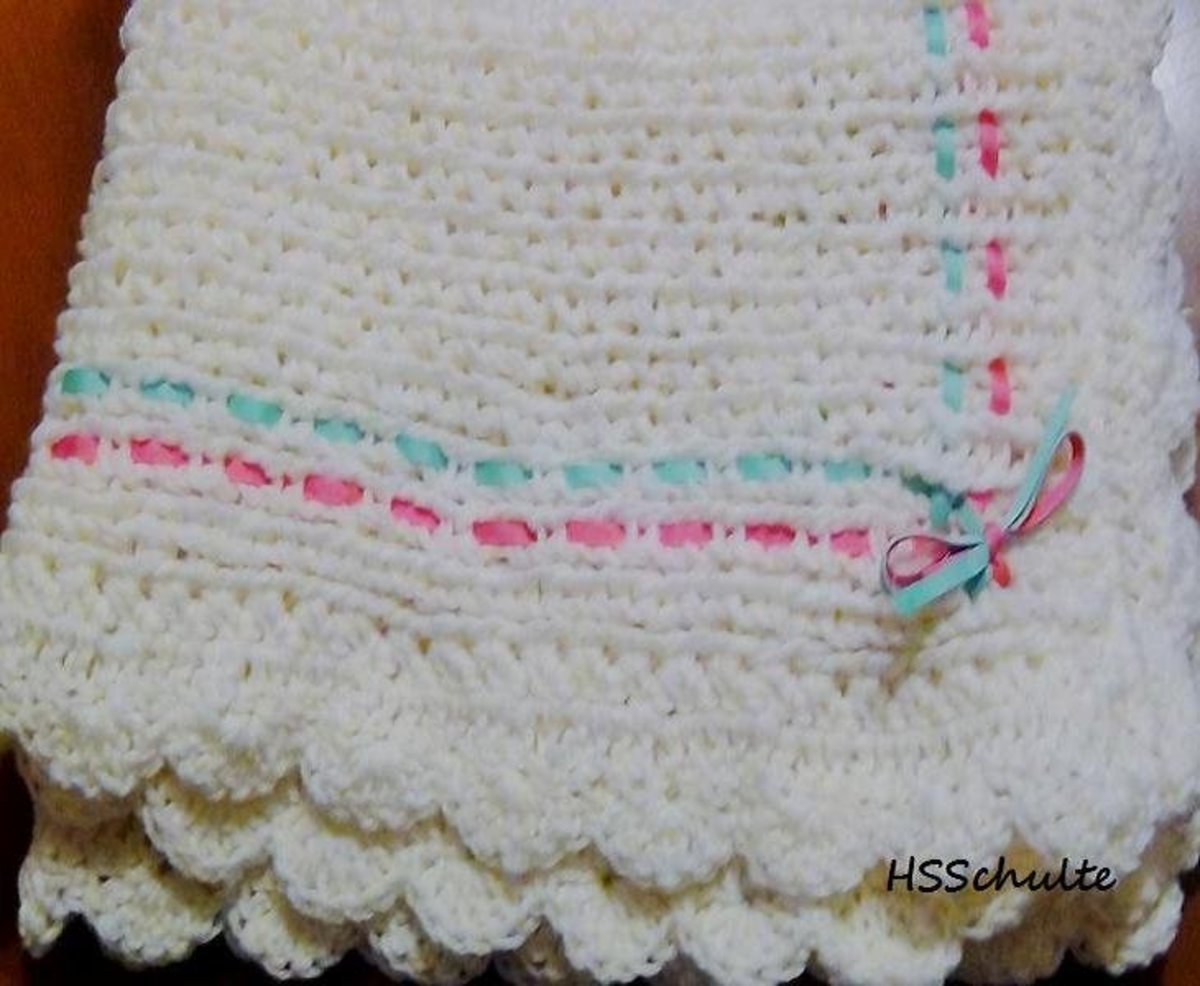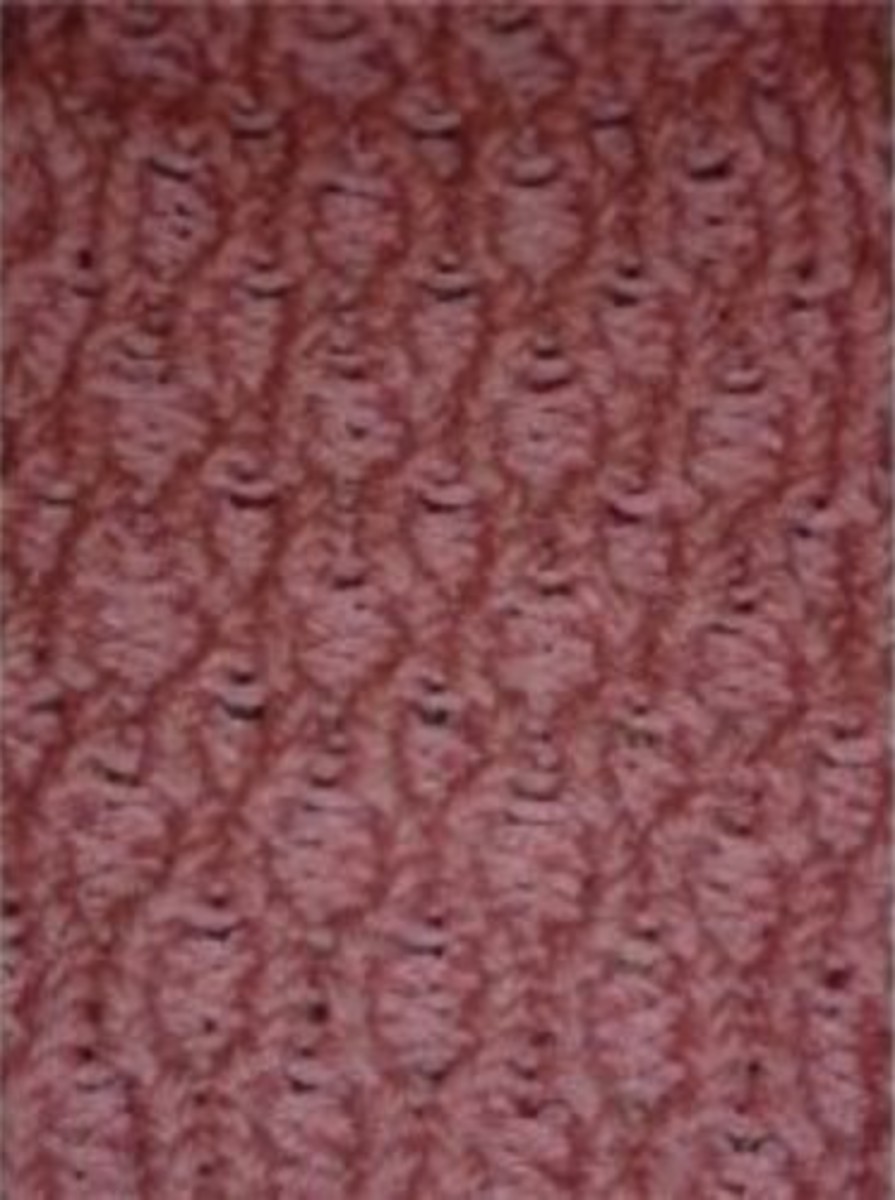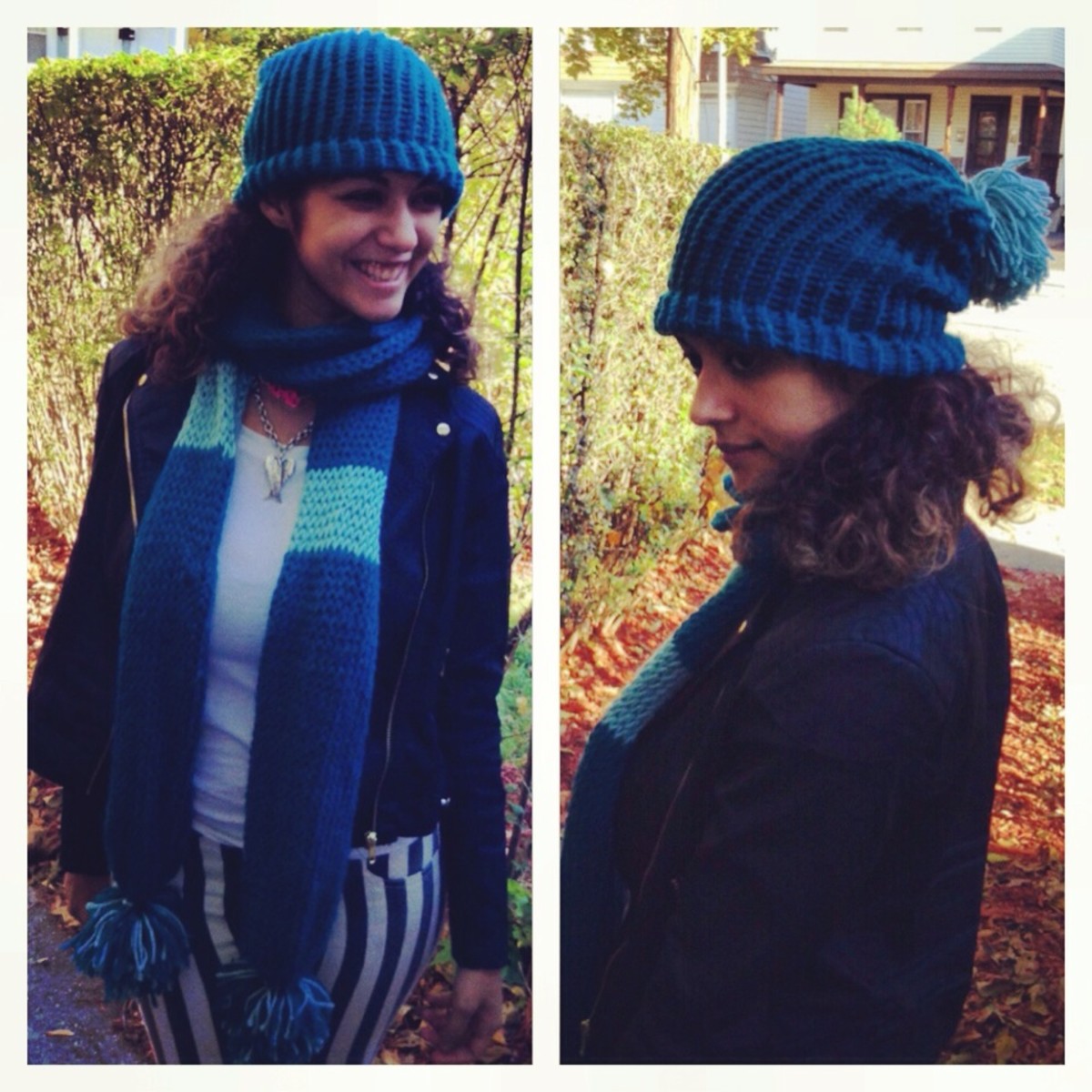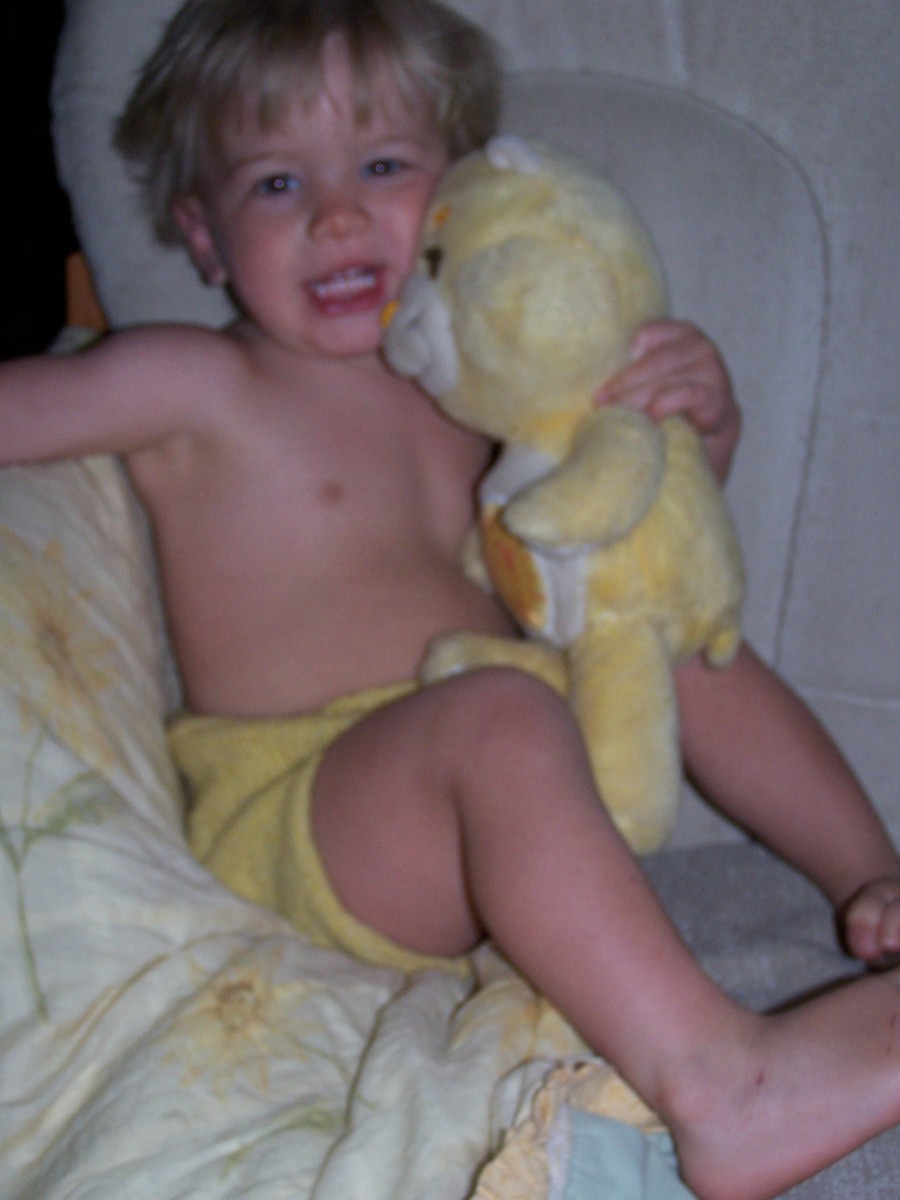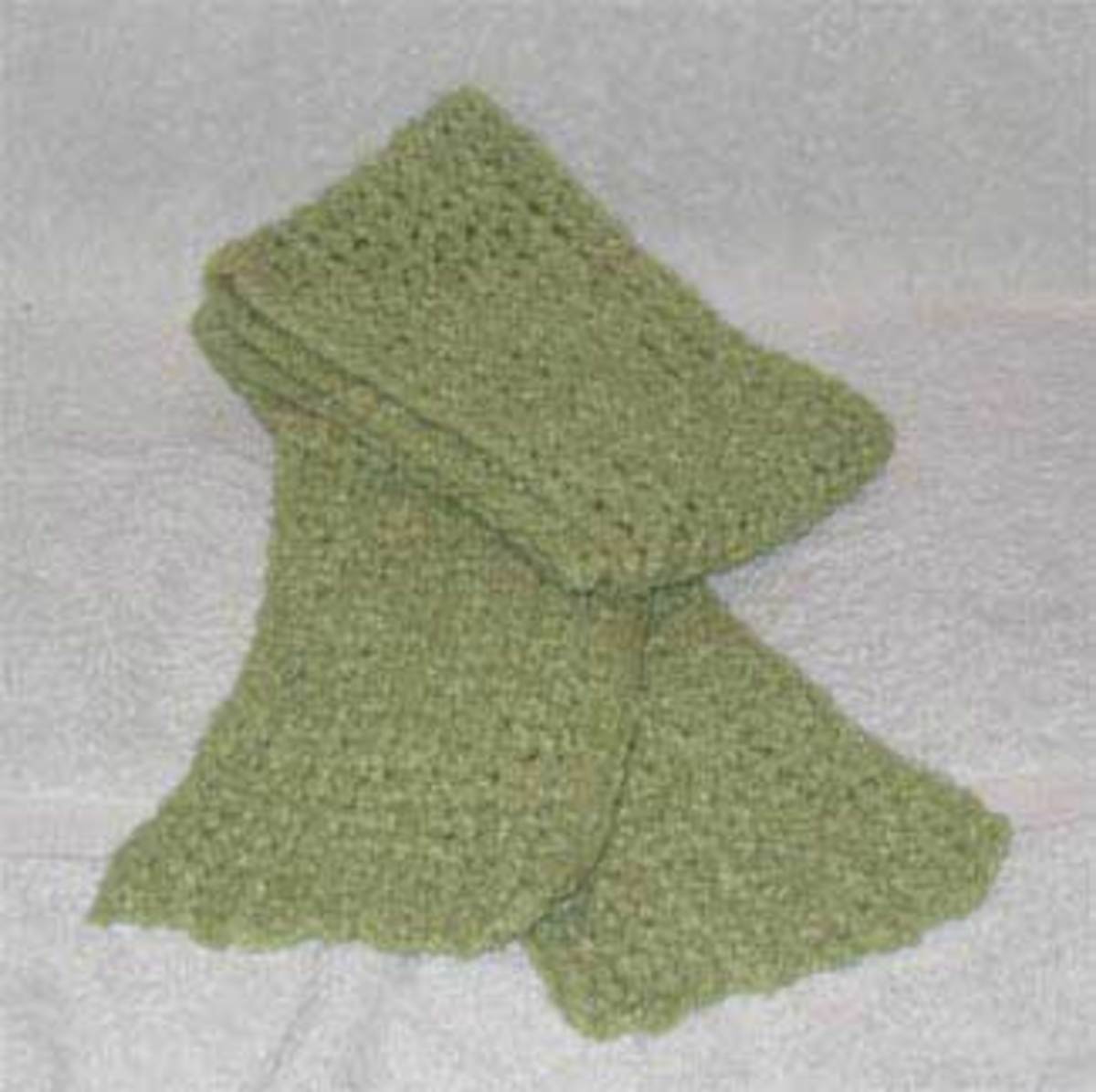- HubPages»
- Arts and Design»
- Crafts & Handiwork»
- Textiles»
- Knitting
How to Knit a Beautiful Baby Blanket
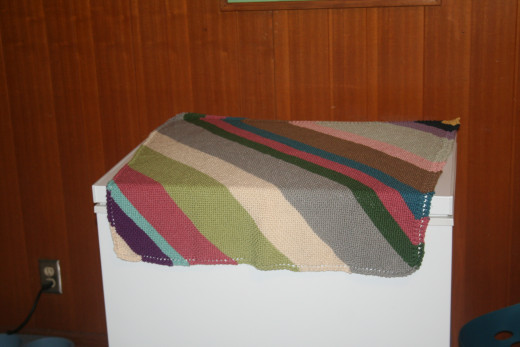
One of the things I love best is knitting baby blankets for my friends. I began doing this about five years ago when a few of my friends from college and medical school began having children. I wanted to give them something really special, something that showed how happy I am for them and how excited I am about their new baby. Since my friends and I are all in our early-mid thirties, there have been a lot of babies over the past years, as you might imagine. By my count, I have knitted 17 baby blankets, including one for my own daughter.
My first efforts were fairly simple. I used a single large skein of yarn and worked in a simple alternating pattern of knit and purl stitches (if you don’t know how to knit and are interested in learning what these stitches are, there are some good video tutorials at http://www.knittinghelp.com/videos/learn-to-knit which can walk you through the basics). When I was done I had made a soft and comfortable square about 30 inches around and the friends I mailed it to were delighted. However, I soon craved a more challenging pattern and so I started looking around. There are plenty of baby blanket patterns available both in books for purchase and for free online. The most modern looking pattern I’ve found is the “log cabin” pattern in “Mason Dixon Knitting” by Kay Gardiner and Ann Shayne, which gives a unique appearance to the blanket and allows the use of a multitude of colors. This book also has other fun patterns and a lot of humorous commentary, so it is worth purchasing if you are a knitter. The most complex pattern I’ve worked to date is the blanket I made for my own daughter, which was knit in small blocks and then sewn together to give a quilt-like appearance. It’s beautiful and it was definitely a labor of love! I’ve also experimented with lining the blankets with a cotton flannel, but realized that the blanket becomes too warm and heavy when I do that and loses the nice stretchy quality of a knitted blanket.
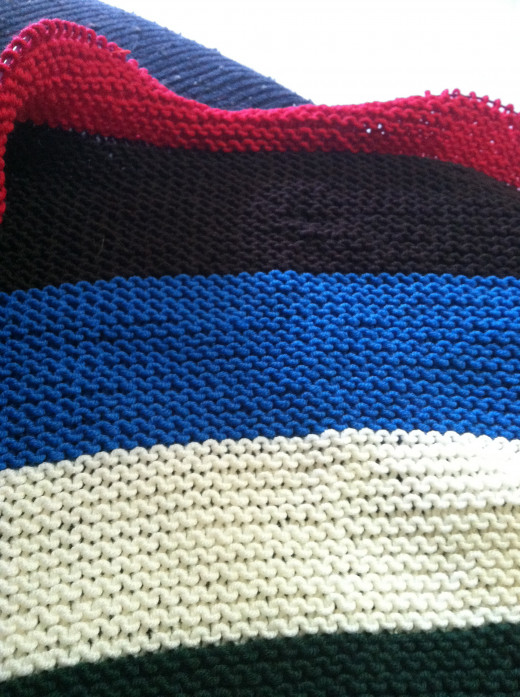
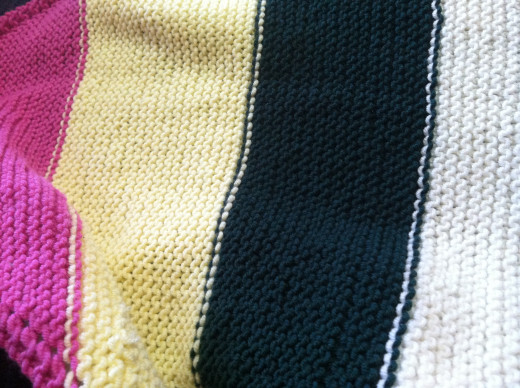
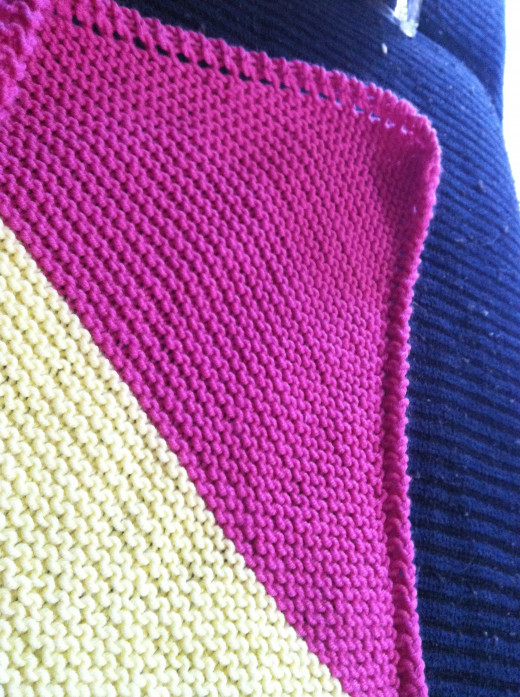
My favorite pattern by far has become the striped diagonal garter stitch knit blanket with a lace border. I am not sure who originally created this pattern; my mother-in-law taught it to me. I’ve also seen it as well as some variations available for free on the internet. It is fun and easy to knit which makes it well suited to a beginner. It also allows plenty of color choice so that you can customize the blanket for a particular friend.
To begin you cast on five stitches. In the first row you knit two stitches, create a stitch by making a yarn-over, and then knit the remaining stitches. Then do the same thing on each subsequent row. By repeating this pattern on each row you add one stitch per row, gradually increasing the size of the blanket. The yarn-over stitch gives a lacy edge to your work, which appears fancy even though it is quite simple. Your working edge will be the diagonal of the blanket. Once you feel the blanket is large enough (a diagonal of about 42 inches will give you a blanket approximately 30 inches x 30 inches) you begin decreasing. To decrease you knit two stitches, yarn over (you still need the yarn over to continue the lace border effect), knit one stitch, then decrease by knitting two stitches together. You can also use a slip, slip knit stitch if you are a little more advanced, which gives a leftward lean to the decrease that fits well with the edge of the blanket. Then knit to the last five stitches, decrease again using a knit two stitches together (which gives a rightward lean to the decrease), and knit the last three stitches. By making two decreases and one yarn over per row you effectively decrease one stitch per row, keeping the blanket symmetrical. The reason for placing the decreases five stitches in is to keep them from interfering in the appearance of the lace border you’ve created with the yarn-overs. You continue decreasing until you are down to five stitches and then you bind off.
Using this pattern you can change colors whenever you wish. Just make sure to always start a new color on the “right” side of the fabric. The right side will be the side that has the smoothest looking color joins. The wrong side will have small rows of interwoven color at each color change, due to the interlocking of the stitches. I’ve included some photographs to help illustrate this.
For baby knits I always choose a machine washable yarn, usually a cotton acrylic blend, because babies invariably make a mess and I want the blankets I make to be used and not put away in a drawer. One of my favorite yarns to work with is Comfy from KnitPicks, an online knitting store. I like the soft texture and it comes in three different weights (fingering which is a very light weight, sport which is medium weight, and worsted which is somewhat heavier and bulkier) and about thirty different colors. I typically choose bright, fun colors for my baby blankets so they are playful and gender neutral. I don’t like to support gender stereotypes and many of my friends choose to be surprised by the baby’s gender. I’ve had some reports of older siblings making off with the blankets I’ve made for their younger sibling, which tells me I’m doing a good job making appealing playthings. Which, after all, is my goal – to create something that will bring some additional fun and joy into the lives of my friends and their children during this wonderful, stressful, challenging and amazing time of our lives.

